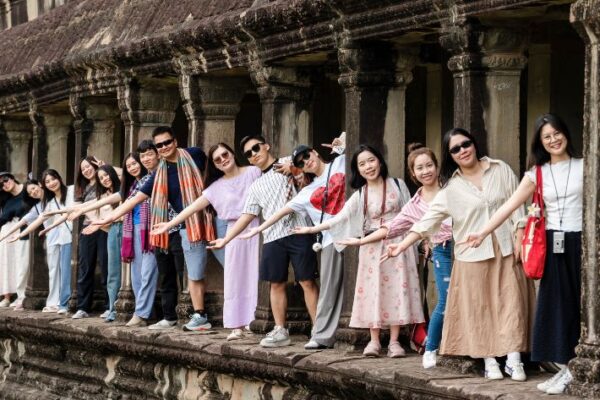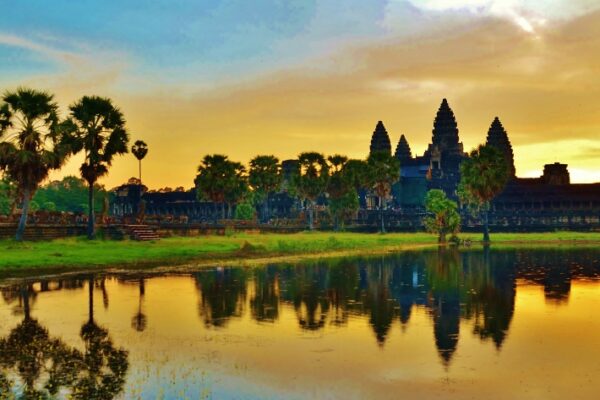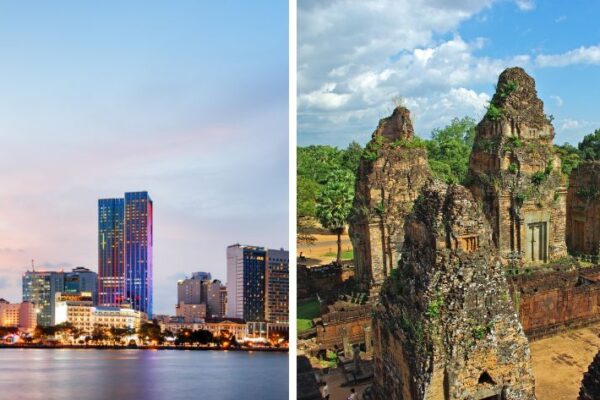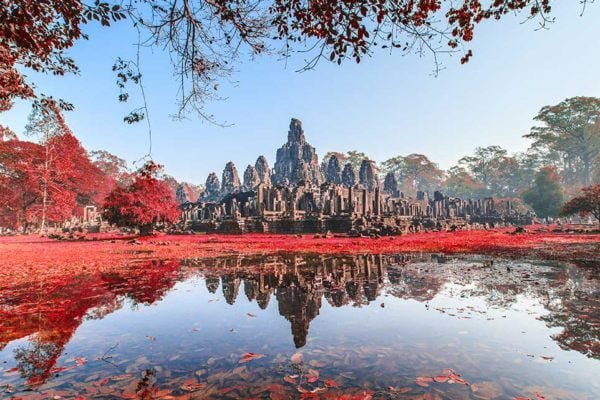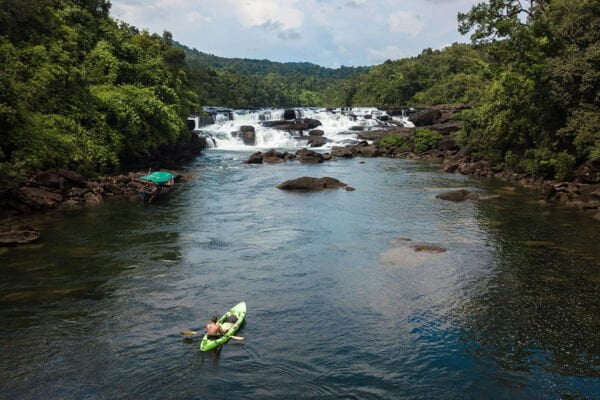Best Time to Visit Angkor Wat: Weather, Crowds & Travel Tips
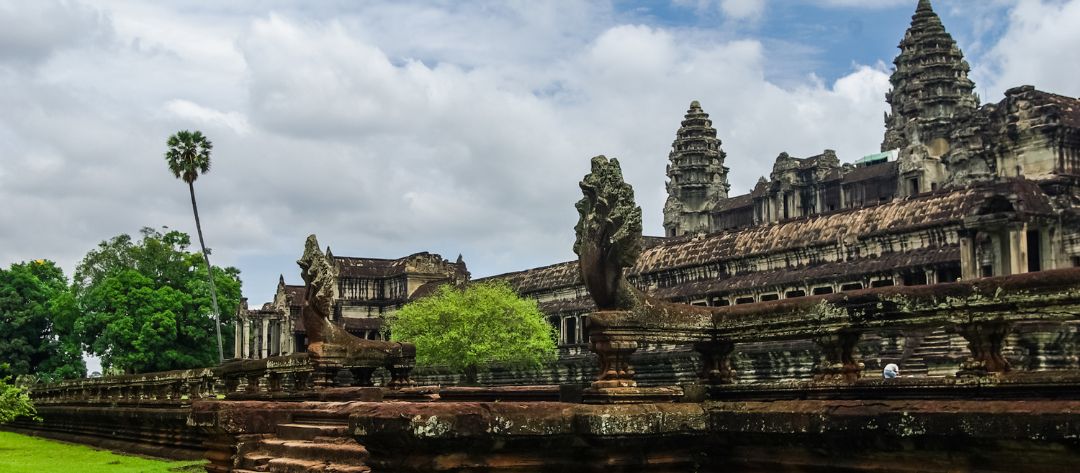
Nestled in Cambodia’s tropical heart, this ancient temple complex attracts millions each year, so timing your trip well can elevate your experience. The best time to visit Angkor Wat depends on what you value most—clear skies, lush greenery, or crowd-free exploration. Each period offers a distinct atmosphere, from the cool, dry season that draws peak crowds to the serene beauty of the rainy months.
In this guide, we break down Angkor Wat’s climate, month-by-month travel conditions, and key tips to help you plan the perfect visit.
Understanding Angkor Wat’s Climate
Angkor Wat, located near Siem Reap, sits in the heart of Cambodia’s tropical zone and experiences two distinct seasons: dry and wet. While the weather remains warm throughout the year, variations in rainfall and humidity can significantly influence your travel experience.
Dry Season (November to April)
Spanning from late autumn to early spring, the dry season is generally considered the best time to visit Angkor Complex for those seeking clear skies and comfortable touring conditions.
Rainfall is minimal, especially from December to February, making it ideal for sunrise temple visits and long days of exploration. Temperatures during this time range from 22°C to 32°C, with lower humidity offering a welcome break from Southeast Asia’s otherwise steamy air.
However, with good weather comes large crowds. Peak months like December and January can see high tourist numbers, resulting in long lines and busy photo spots. Despite this, the dry season remains a top choice for travelers prioritizing predictable weather and vivid blue skies.
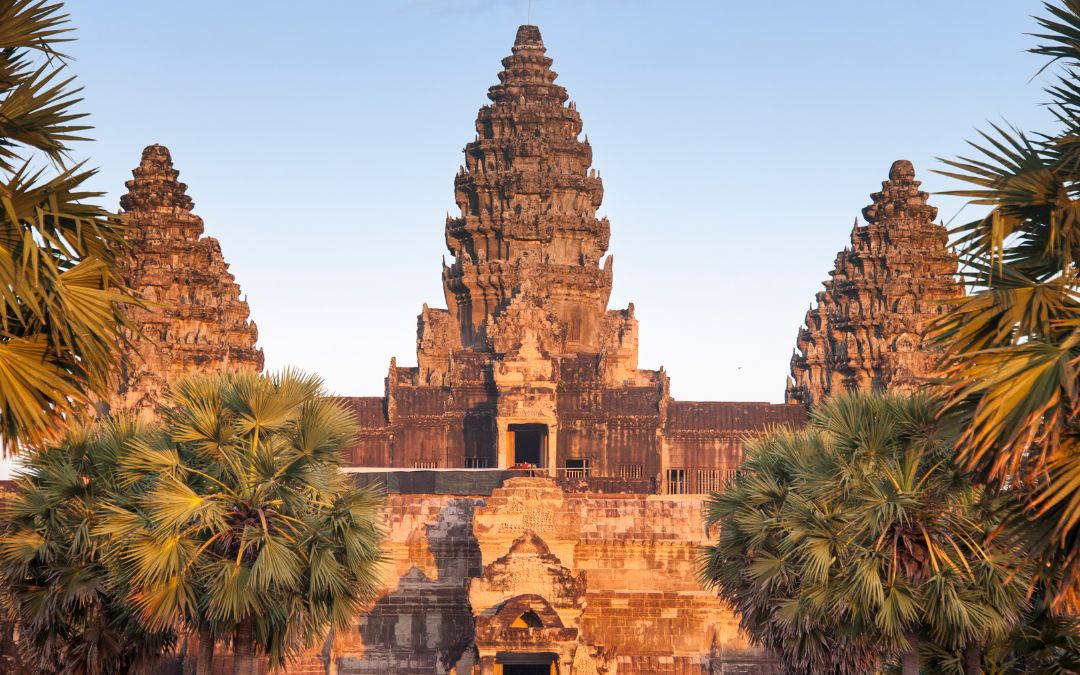
The dry season offers sunny days and clear skies for temple visits.
Wet Season (May to October)
The wet or “green” season brings regular afternoon showers and rising humidity, especially from July through September. While daily temperatures hover between 25°C and 33°C, the increased moisture levels create a lush, emerald landscape that’s perfect for photography and peaceful temple exploration.
Rain tends to fall in short bursts rather than all-day downpours, allowing for dry, sunny mornings ideal for sightseeing. This off-peak period also means fewer crowds and better deals on accommodation and tours.
For travelers who don’t mind occasional showers and are looking for a quieter, more atmospheric Angkor Wat, the green season has its own unique charm.
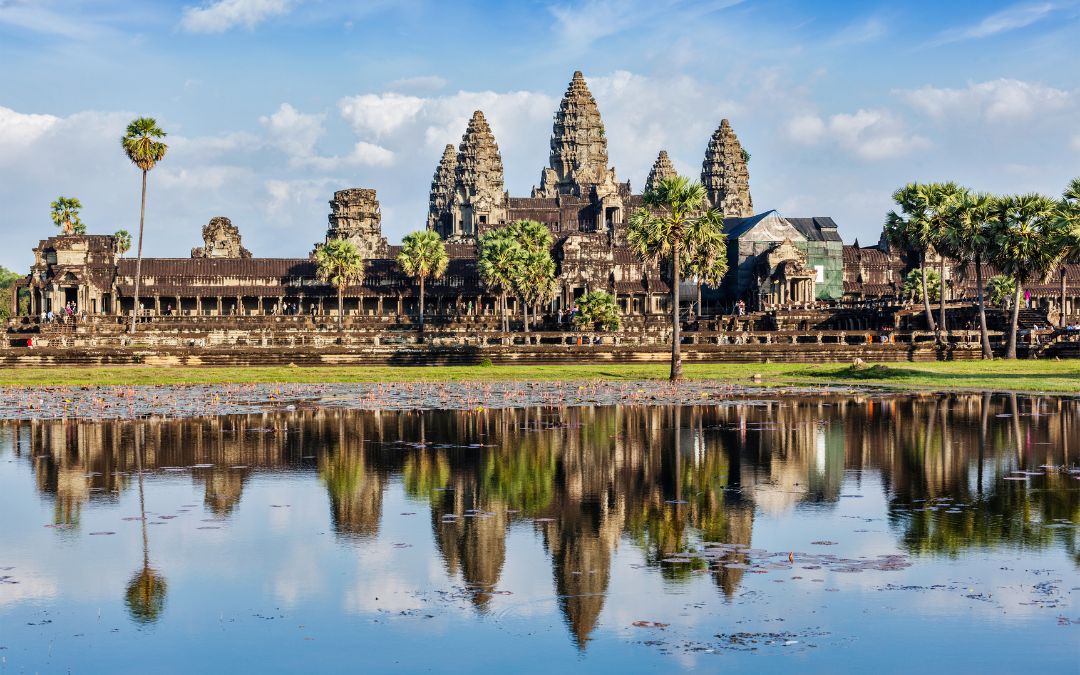
Rain showers mark the wet season, but temples remain accessible.
>> Read More: Best Time To Visit Cambodia
Monthly Breakdown: Weather and Crowd Levels
Angkor Wat’s unique charm reveals itself differently across the year. Whether you prioritize crowd-free temples, vibrant green backdrops, or cooler sightseeing conditions, understanding the monthly weather and visitor trends can help you plan the most rewarding journey.
November to February: Peak Season
This is the most popular window for visiting Angkor Wat. With clear skies, cooler temperatures (22°C–32°C), and low humidity, exploring the sprawling temple complex becomes a much more pleasant experience. Early mornings are crisp, making sunrise visits particularly magical.
However, this comfort comes with trade-offs. Expect significant crowds, particularly at iconic sites such as Angkor Wat, Bayon, and Ta Prohm.
Accommodation prices often peak during these months, and advance bookings are highly recommended. Despite the congestion, this remains the best time to visit Angkor Wat if you’re aiming for ideal weather and postcard-perfect photos.
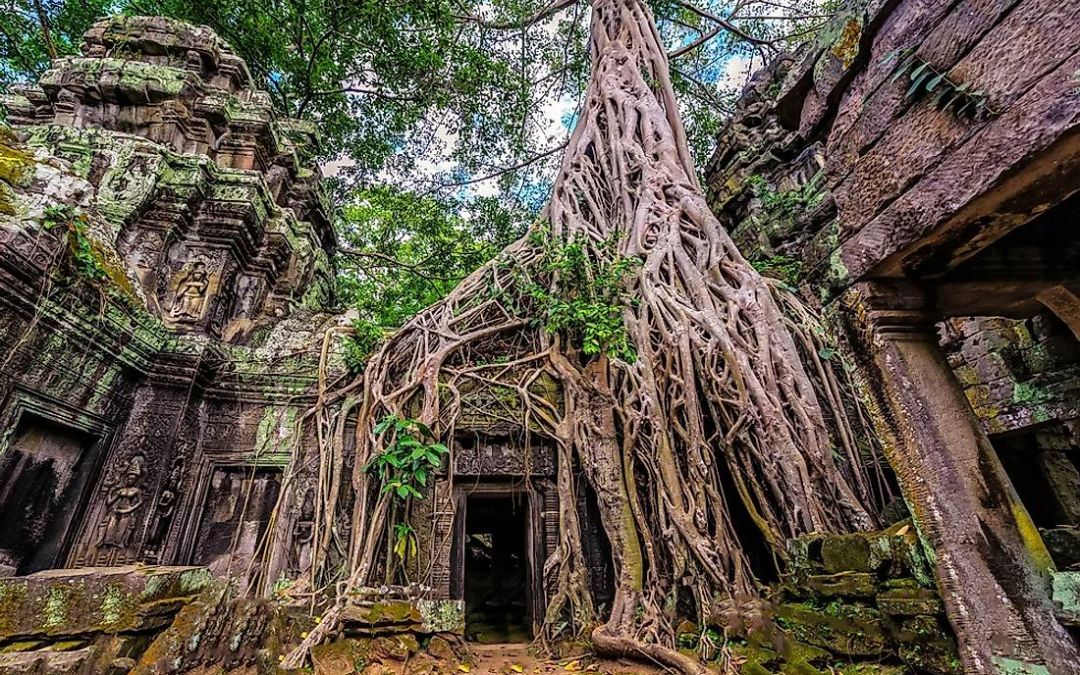
Tourists flock to Ta Prohm in peak season to see roots entwine stone walls.
March and April: Shoulder Season
Temperatures begin to climb steadily during these months, often exceeding 35°C by midday. While mornings and late afternoons are still manageable, midday visits can be draining due to the intense heat.
On the plus side, crowd levels taper off slightly, and accommodation prices may start to dip, making it a good option for travelers who prefer fewer tourists and don’t mind the heat.
Keep hydrated, wear light clothing, and schedule sightseeing for early in the day. April also coincides with Khmer New Year, bringing festive energy but also busier public areas.
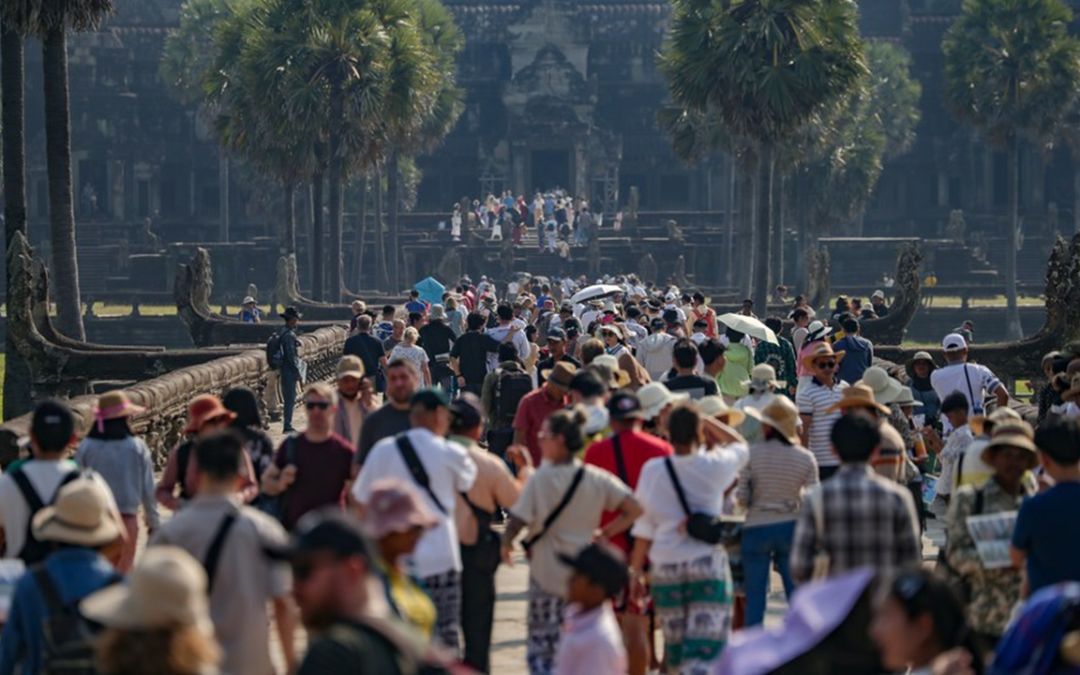
Cambodians celebrate Khmer New Year in the hot shoulder season.
May to October: Low (Green) Season
Known as the monsoon or “green” season, this period brings frequent afternoon showers, higher humidity, and fewer tourists. Temperatures hover between 25°C and 33°C, with lush landscapes coming to life after every rainfall. Mornings are typically dry, offering great light for photography and peaceful exploration before the rain arrives.
Fewer crowds mean you can enjoy famous temples in near solitude—a rarity during peak months. Hotel and tour prices are also much lower.
The only caveats are occasional disruptions due to heavy rain and slippery paths, particularly at remote temple sites. But for travelers seeking tranquility, dramatic skies, and affordability, this is a surprisingly rewarding season.
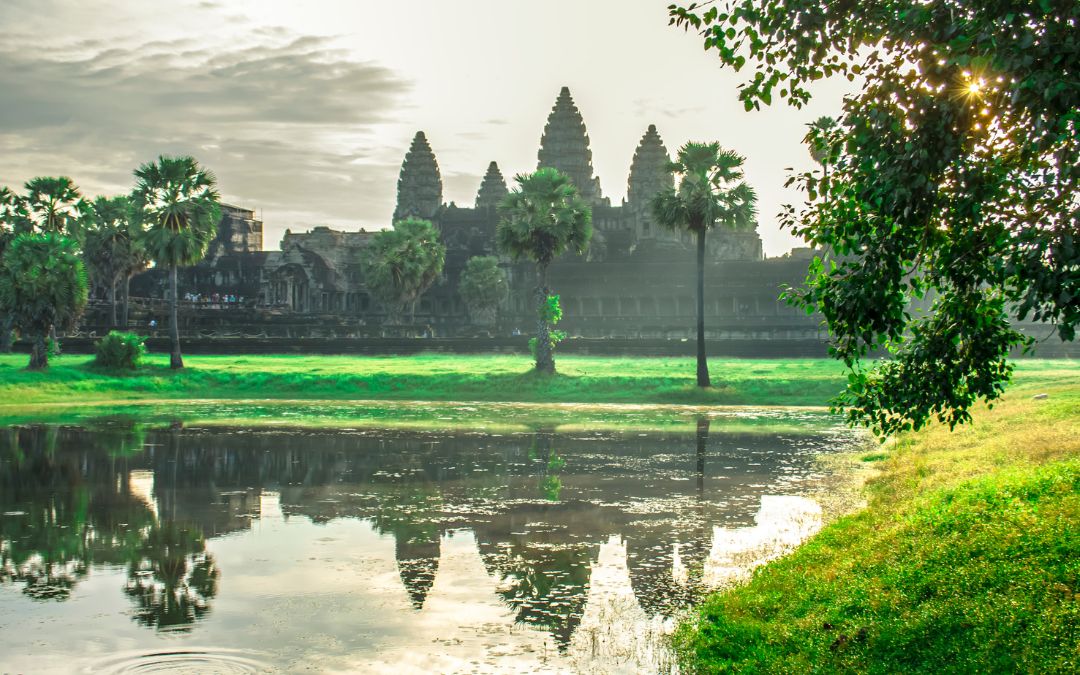
Green season brings fewer crowds and lush temple surroundings.
>> See Tour: Cambodia’s Ancient Temples & Pristine Beach
Why The Green Season Is the Best Time To Visit Angkor Wat
Though most travelers gravitate toward the dry season, the green season—extending from May to October—reveals a more poetic side of Angkor Wat. This period, often overlooked due to its association with rain, actually offers several compelling advantages for those willing to embrace Cambodia’s tropical rhythms.
Enhanced Photography Opportunities
After a refreshing afternoon rain, the skies often clear into soft pastels or dramatic cloud formations, casting magical light on moss-covered stones and reflecting pools.
The lush greenery surrounding the temples adds depth and color to every frame, ideal for photographers seeking something beyond the typical postcard shot.
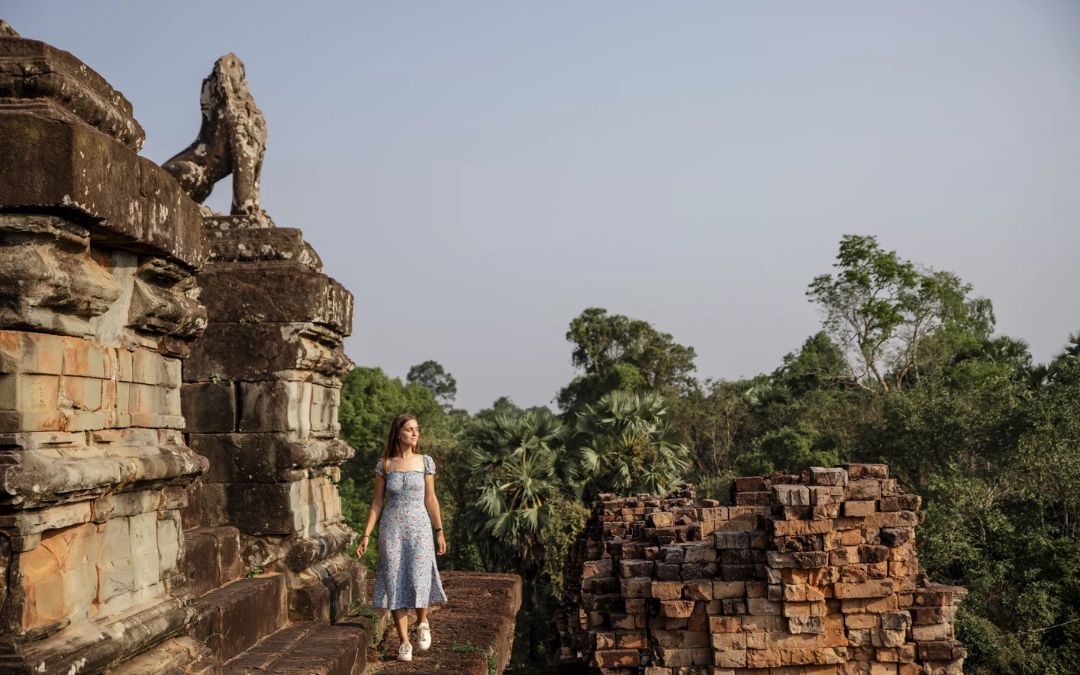
Photographers love the dramatic skies and reflections after rain.
More Peaceful Exploration
With significantly fewer tourists during these months, visitors can enjoy the temples in near solitude. The hush after rainfall, combined with the absence of large tour groups, allows for a more contemplative and personal experience.
Whether you’re meditating at Bayon or walking through jungle-cloaked Ta Prohm, you’ll find serenity hard to match during peak months.
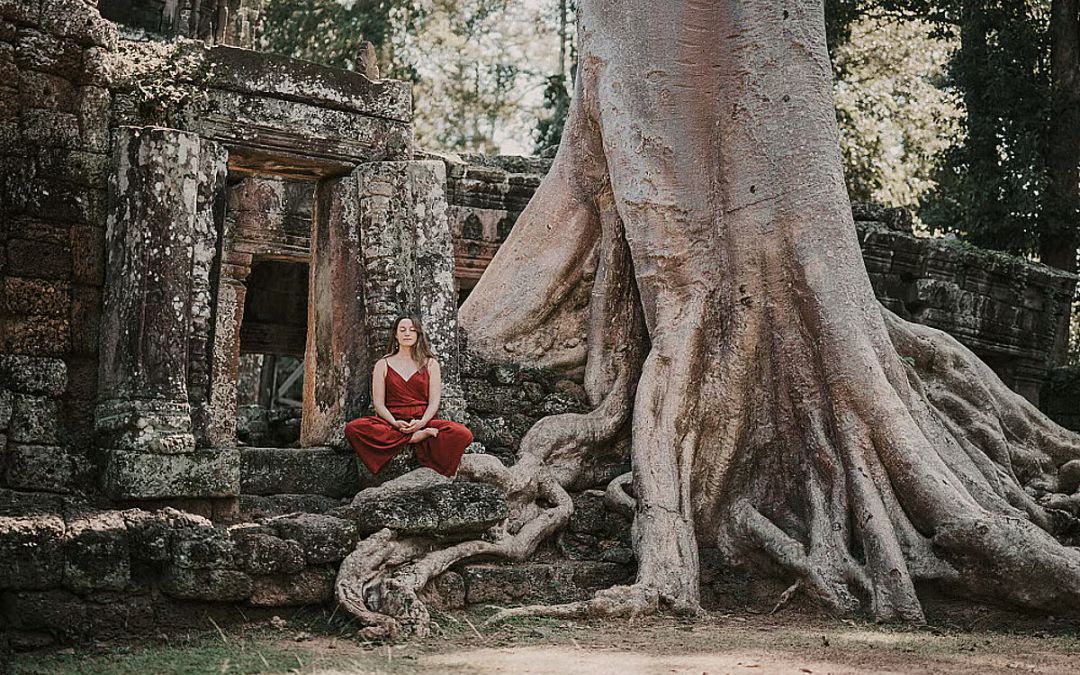
Peace seekers enjoy meditating quietly at Bayon in the off-season.
Budget-Friendly Travel
The green season is also a win for your wallet. Many hotels, tuk-tuk drivers, and licensed guides offer lower rates during this period, and availability is rarely an issue. For long-term travelers or those on a budget, this makes Angkor Wat more accessible without sacrificing quality.
In short, the green season may just be the best time to visit Angkor Wat if you’re seeking authentic moments, quieter paths, and cinematic landscapes.
>> See Tour: The Bay to Angkor Tour
Tips for an Optimal Angkor Wat Journey
Visiting Angkor Wat is more than just checking off a bucket list destination — it’s an immersive journey through ancient history and the rich culture of the Khmer people. To make the most of your trip, especially during the best time to visit Angkor Wat, consider these practical tips:
- Start early, stay ahead
Begin your temple visits around 5 – 6 to avoid the intense heat and tourist crowds. While many flock to Angkor Wat for sunrise, consider Ta Prohm instead — hauntingly quiet and atmospheric at dawn.
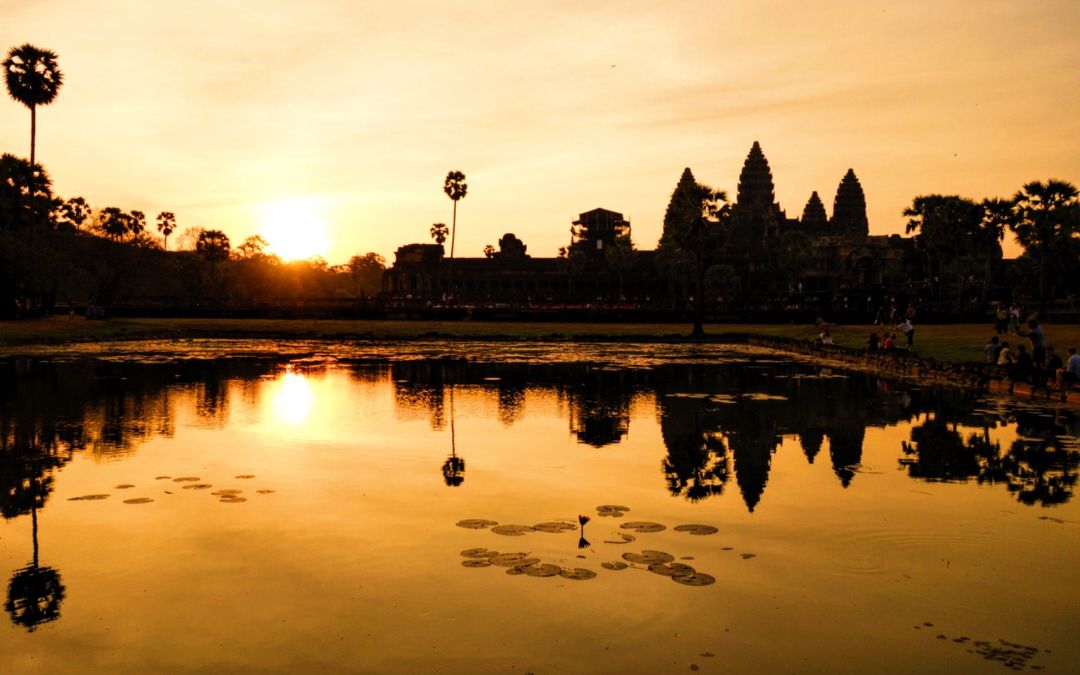
Start exploring temples by 5–6 AM to catch sunrise and beat heat.
- Don’t just read — hire a guide
A professional guide can bring the ruins to life with stories and context you won’t find in a $10 guidebook. They’ll also help you dodge the crowds by planning less common routes and timings.
- Bring a packed breakfast
After catching the early light, most visitors return to Siem Reap for breakfast. Stay behind with your own packed meal and enjoy the temples while they’re at their quietest and most magical.
- Dress and pack smart
Cambodia’s climate is hot and humid year-round. Bring sunscreen, a wide-brim hat, breathable clothing, and refillable water. If you visit during the rainy season, don’t forget a poncho or travel umbrella.
- Take a midday break
By 11:30, the heat becomes intense. Head back to your accommodation for lunch and a rest. If your hotel lacks a pool, consider a day pass at resorts like Angkor Century or The Cockatoo.
- Travel against the flow
Most tour groups follow the same clockwise route. Ask your driver or guide to reverse the itinerary or focus on quieter temples like Banteay Samre, Ta Som, or the jungle-covered Preah Khan.
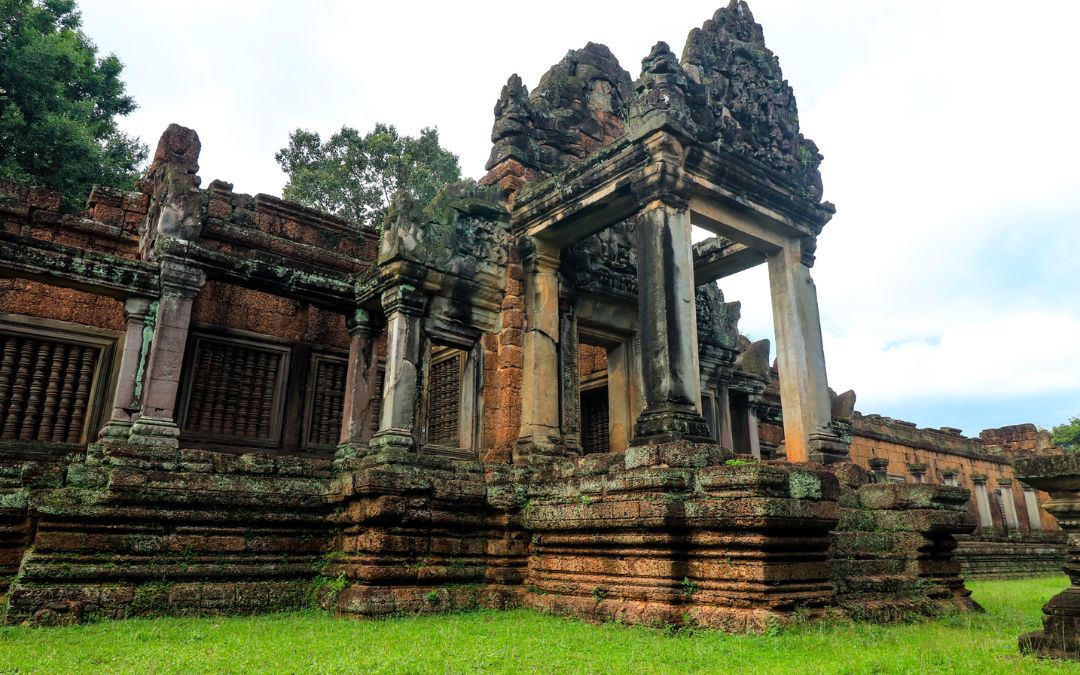
Choose quiet temples like Preah Khan, Ta Som, or Banteay Samre.
- Allow more time
One day isn’t enough. Ideally, spend at least three days exploring Angkor’s vast expanse — from iconic monuments to hidden jungle gems like Beng Mealea, which feels like stepping into a movie set.
- Visit on weekdays
If you’re traveling during the peak season, choose weekdays over weekends to avoid large local tour groups. Monday through Thursday tend to be quieter.
- Embrace the rain
During the green season, afternoon showers are common but brief. The rain cools the air, enhances the lush scenery, and often clears out the crowds, perfect for peaceful exploration.
- Time your visit around festivals
Avoid Khmer New Year (April) if you dislike crowds, or embrace it if you want to witness the temples come alive with local ceremonies, games, and blessings.
>> Read More: An Easy Guide On Planning Your Angkor Wat Tour
Plan Your Perfect Trip with Asia Pioneer Travel
So, the best time to visit Angkor Wat is from November to February, thanks to the cooler weather, clear skies, and ideal conditions for exploration and photography. During this peak season, you’ll experience the temples in their most majestic light. That said, other seasons also offer unique charm — from lush landscapes in the green season to fewer crowds in the shoulder months.
Whether you crave sunrise moments or quiet jungle trails, Asia Pioneer Travel can craft a tailor-made Angkor Wat journey that fits your travel style and timing. Let your adventure begin with a plan as timeless as the temples themselves.
